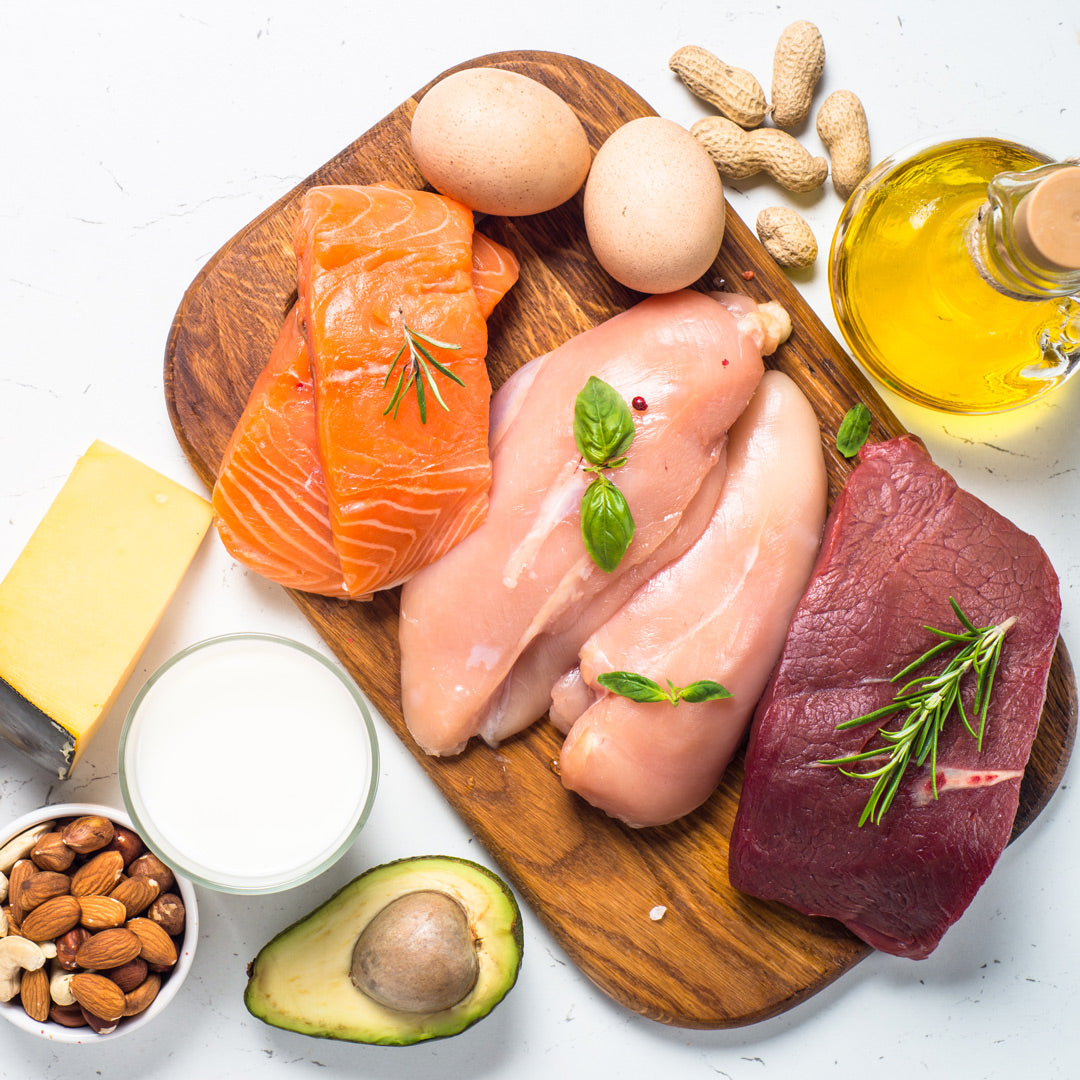What are macronutrients?

Macronutrients make up almost all the foods we eat. Most foods contains a mixture of one or more macronutrients and is classified by the macronutrient it has the most of.
There are three main types of macronutrients. They are Carbohydrates, Protein and Lipids (Fats). They provide our bodies with the energy and nutrients needed to function and grow. Each of these macronutrients provides energy in the form of calories.
CarbohydratesCarbohydrates are the body’s preferred source of energy and is needed in the largest amount. In Australia & New Zealand, it is recommended that 45-65% of your daily calorie intake comes from carbohydrates.
The body prefers carbohydrates because they are easily broken down and turned into energy for our body. The brain, kidneys, muscles and heart all need carbohydrates to function properly. In addition, carbohydrates are needed to help turn protein into energy, and help metabolise fats.
Most carbohydrate foods can be put into two categories: Simple Carbohydrates VS Complex Carbohydrates. Simple Carbohydrates are easier to digest and are great when you need to raise your blood sugar and have a quick energy boost. Complex Carbohydrates release their energy slower because the body digest them slower, making them perfect for longer, lasting energy. When people decide to go on ‘Low Carb’ diets, they’re generally trying to avoid having food with simple carbs.
Carbohydrates are primarily found in starchy foods, like rice, oats, pasta, potatoes, pumpkins, fruits, milk, and yogurt. Other foods like starchy vegetables, beans, nuts, seeds, and cottage cheese contain carbohydrates, but in lesser amounts. Simple carbohydrates can be found in foods like sweets, refined breads, sugary cereals and soft drinks.
In the body, protein is primarily used in our body to build and repair muscle tissue. In Australia & New Zealand, the recommended calorie intake of protein is between 15 and 25% of the daily calorie intake.
Proteins are used to produce new tissues for growth and tissue. It’s also used regulate and maintain bodily functions such as digestion and immunity. The body can turn protein into energy sources when carbohydrates are not available. Protein is a major component of most cells in the human body.
You can get your daily protein intake from foods such as red meat, chicken, pork, seafood, and eggs. You can also get protein from foods like milk, yoghurt, beans, nuts and soy products.

The body needs fats to provide energy for muscles and body processes. Fats protect and insulate your body and vital organs, and aid digestion and absorption of energy. In Australia & New Zealand, it’s suggested that Lipids should make up 20 to 35% of your daily calorie intake.
Fat is energy dense, containing 9 calories per gram, whereas protein and carbohydrate contain only 4 calories per gram. When you consume over your daily calorie intake, your body will store the excess as lipids in adipose cells. In other words, when you eat more than your body needs that day, your body will turn the energy it gets from the food into fat. During exercise and between meals your body will use up these fat cells to keep your body functioning.
Fats can be broken down into four categories: saturated fat, monounsaturated fat, polyunsaturated fat and trans fat. When people go on ‘Low Fat’ diets, they’re generally trying to avoid saturated and trans fats as these fats are considered ‘unhealthy fats’ that are linked to increased risk of heart disease as well as other health problems. You can find unhealthy fats in foods such as bacon, cookies, sweets, butter and deep-fried foods.
Monounsaturated fat and polyunsaturated fat are considered ‘healthy fats’ and they are linked to lowering your risk of heart disease and other health problems. Healthy fats can be found in foods like avocados, dark chocolate, whole eggs, fatty fish, nuts and olive oil.
Learn more about macronutrients by checking out these links:
https://www.innerbody.com/nutrition/macronutrients
https://www.ncbi.nlm.nih.gov/pmc/articles/PMC6115811/
https://study.com/academy/lesson/what-are-macronutrients-definition-functions-examples.html
https://www.possiblepat.com/eating-fat-doesnt-make-you-fat-heres-why/
https://blog.glycoleap.com/types-of-fat/
https://www.healthline.com/nutrition/10-super-healthy-high-fat-foods#section1

